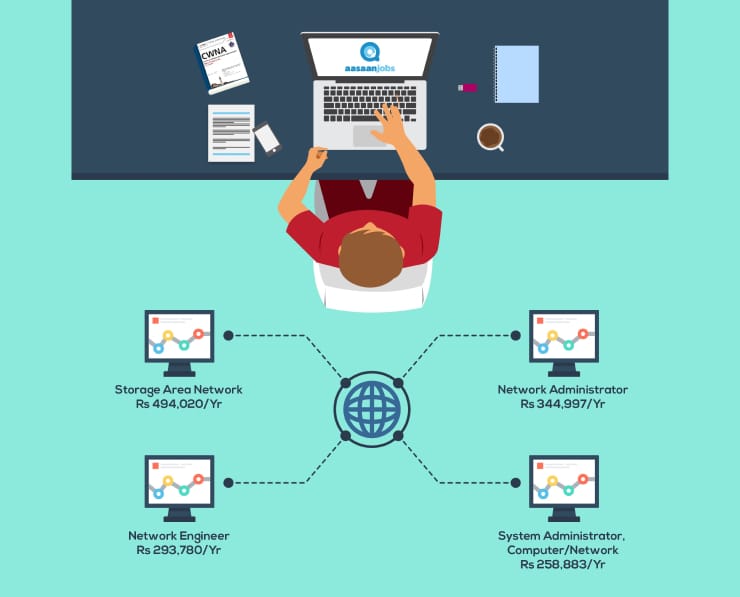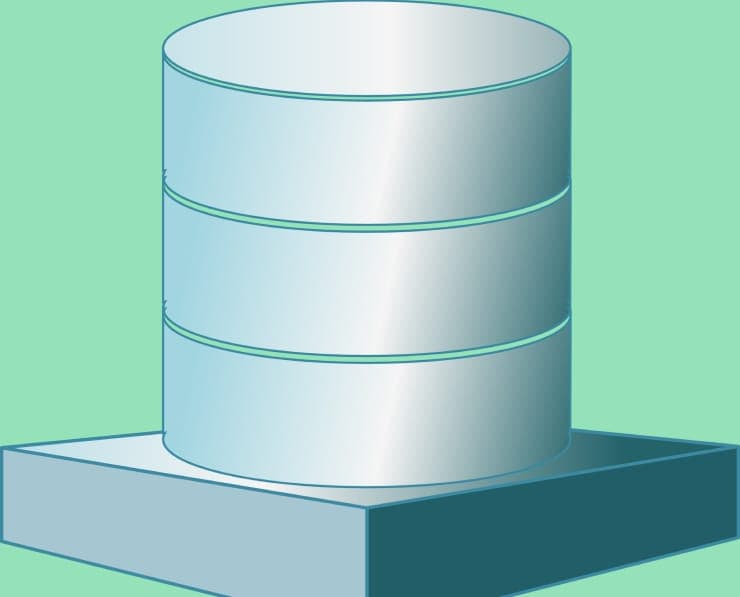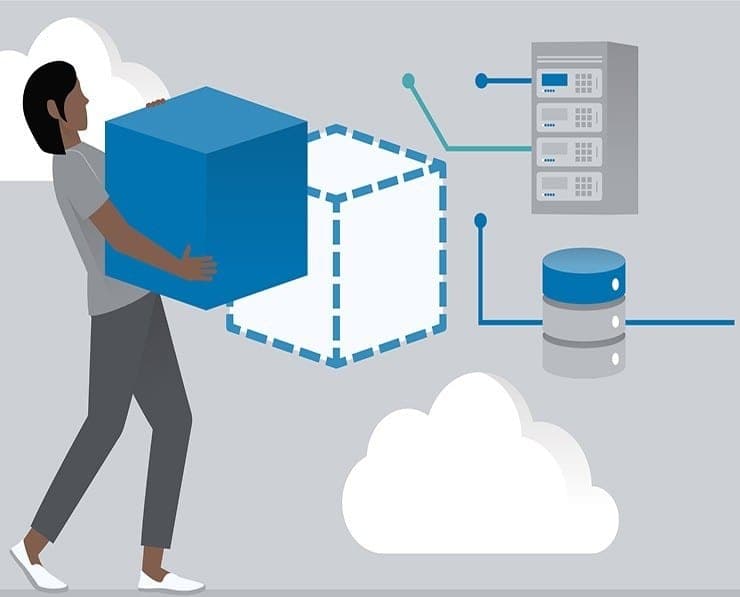Student Feedback
AWS Certified Solutions Architect - Associate SAA-C02 Certification Video Training Course Outline
Introduction - AWS Certified Sol...
AWS Fundamentals: IAM & EC2
High Availability and Scalabilit...
Introduction - AWS Certified Solutions Architect Associate
AWS Certified Solutions Architect - Associate SAA-C02 Certification Video Training Course Info
AWS SAA-C02 Exam Training: Become a Certified Solutions Architect Associate
AWS Solutions Architect Associate SAA-C02 Mock Exam – Updated Practice Questions for Certification
What You Will Learn From This Course
• Gain hands-on experience with AWS services through realistic SAA-C02 practice exams
• Develop a deep understanding of AWS architecture best practices and design principles
• Improve your problem-solving and test-taking skills for cloud computing scenarios
• Learn how to analyze real-world situations and choose the correct AWS solutions
• Strengthen knowledge of compute, storage, networking, and security services in AWS
• Build confidence in tackling multiple-choice questions under exam conditions
• Understand the reasoning behind correct answers through detailed explanations
• Enhance your ability to make informed architectural decisions on AWS
• Become proficient in evaluating trade-offs and designing scalable cloud solutions
• Prepare effectively for the AWS Certified Solutions Architect Associate SAA-C02 exam
Learning Objectives
By the end of this course, learners will be able to:
• Demonstrate mastery of core AWS services including EC2, S3, RDS, VPC, Lambda, and IAM
• Apply best practices for designing highly available, cost-efficient, and fault-tolerant architectures
• Identify the right AWS service for specific business and technical requirements
• Analyze scenarios and solve complex architectural problems confidently
• Interpret AWS service documentation to make informed design choices
• Implement strategies for disaster recovery, backup, and security management
• Navigate the SAA-C02 exam with enhanced confidence and accuracy
• Utilize knowledge from practice exams to reinforce learning and retention
• Evaluate trade-offs when designing cloud solutions for performance, cost, and scalability
• Integrate AWS services into practical architectures that meet enterprise requirements
Target Audience
This course is designed for:
• Aspiring AWS Solutions Architects preparing for the SAA-C02 certification exam
• IT professionals who want to enhance their cloud architecture skills
• Cloud engineers seeking to validate their AWS knowledge with a professional certification
• Developers who want to understand AWS best practices for solution design
• Anyone looking to gain hands-on experience in designing and deploying AWS-based solutions
• Professionals aiming to improve test-taking skills and pass the AWS Certified Solutions Architect Associate exam
• Individuals seeking career advancement in cloud computing and AWS architecture
• Students and learners who want practical knowledge of AWS services through scenario-based practice
• Professionals responsible for cloud infrastructure planning, implementation, and management
• Those who want to deepen their understanding of AWS architecture without formal lecture-based courses
Requirements
To make the most of this course, learners should have:
• Basic understanding of cloud computing concepts and terminology
• Familiarity with IT networking, storage, and security fundamentals
• Experience using computers for administrative tasks and navigating online platforms
• Basic knowledge of virtualization and server infrastructure concepts
• Access to an AWS free-tier account or practice environment for hands-on experience
• Willingness to engage with multiple-choice practice exams and review detailed explanations
• Commitment to regular practice to build confidence and familiarity with AWS services
• Motivation to analyze real-world cloud scenarios and solutions
• Ability to dedicate time to study and complete multiple practice exams
• Interest in pursuing AWS certification as part of career growth in cloud technologies
Prerequisites
Before starting this course, learners are recommended to have:
• Fundamental understanding of IT and cloud computing principles
• Basic knowledge of AWS services such as EC2, S3, and IAM
• Familiarity with networking concepts like subnets, routing, and VPN
• Experience with managing storage and databases in a cloud or local environment
• Awareness of security best practices, including encryption and access control
• General understanding of system architecture and application deployment processes
• Willingness to learn through practice-based exams rather than lecture-heavy material
• Commitment to reviewing detailed answer explanations to reinforce learning
• Basic problem-solving skills for evaluating cloud architecture scenarios
• Motivation to pursue AWS Certified Solutions Architect Associate certification and achieve professional growth
Description
The AWS Certified Solutions Architect Associate SAA-C02 exam is designed to validate a candidate’s ability to design and deploy scalable, highly available, and fault-tolerant systems on AWS. This course focuses on preparing learners to handle the real-world complexity of AWS architecture by providing a series of practice exams that simulate the types of questions found on the actual certification test.
The exam covers multiple domains, including design of resilient architectures, performance optimization, cost-efficient solutions, security best practices, and operational excellence. By regularly practicing with multiple-choice scenarios, learners can become familiar with the reasoning required to choose the correct solutions for varied cloud computing challenges.
This course emphasizes practical learning rather than theory. The practice exams include scenarios that reflect real-world business requirements, such as choosing appropriate compute services, configuring networking and security, and planning storage solutions. Detailed explanations for each question help learners understand not only the correct answer but also the underlying principles that make it correct. This approach reinforces knowledge retention and prepares students to confidently navigate the complexities of the SAA-C02 exam.
The learning approach in this course is designed to be accessible to beginners while still valuable for professionals with intermediate AWS knowledge. Whether you are starting your cloud certification journey or looking to solidify your existing skills, this course provides targeted practice that aligns directly with exam objectives. By focusing on hands-on problem solving and scenario-based questions, learners develop both the confidence and competence required to pass the AWS Certified Solutions Architect Associate exam.
Importance of Practice Exams
Regular practice is essential for success on the SAA-C02 exam. Practice exams help learners identify knowledge gaps, reinforce learning, and build familiarity with the format and style of exam questions. Unlike passive studying, active engagement with multiple-choice questions improves critical thinking and decision-making skills, both of which are crucial for designing effective cloud solutions.
Each question in the practice exams is crafted to reflect real-world AWS scenarios, including considerations for performance, security, cost optimization, and availability. Detailed explanations allow learners to understand the rationale behind each answer, helping to ensure that knowledge is retained long after the test has been completed.
By consistently practicing with these exams, learners gain a deeper understanding of AWS services and the ability to navigate complex architectural problems. This methodical approach ensures that candidates not only memorize facts but also develop the analytical skills needed to make effective design decisions in a professional environment.
Course Modules / Sections
This course is organized into carefully structured modules to provide learners with a systematic approach to mastering the SAA-C02 AWS Certified Solutions Architect Associate exam. Each module builds on previous knowledge, ensuring a progressive learning experience that covers both conceptual understanding and practical application.
The first module introduces learners to the fundamentals of AWS cloud architecture, including core services, deployment options, and basic design principles. Learners gain a solid foundation in cloud computing concepts, such as elasticity, scalability, high availability, and fault tolerance, which are critical for making informed architectural decisions.
The second module focuses on compute services, particularly Amazon EC2, Lambda, Elastic Beanstalk, and container services such as ECS and EKS. Learners explore the features, use cases, and cost considerations for each service. The module also covers scaling strategies, instance types, and methods for optimizing performance and availability. Hands-on scenarios in practice exams reinforce the understanding of how these services are deployed and managed in real-world applications.
The third module covers storage services, including Amazon S3, EBS, EFS, and Glacier. Learners examine data durability, lifecycle policies, storage classes, and security considerations. This module emphasizes designing storage solutions that balance performance, cost, and redundancy, while also addressing backup and recovery strategies.
Networking and content delivery services are explored in the fourth module. Learners study Amazon VPC, subnets, route tables, NAT gateways, security groups, and network ACLs. Additional topics include CloudFront, Direct Connect, and VPN configurations. Practice scenarios demonstrate how to build secure, scalable, and high-performing networks in AWS, providing learners with the practical skills required to implement robust architectures.
The fifth module focuses on databases and data management services. Amazon RDS, DynamoDB, Aurora, and Redshift are examined, along with considerations for backup, replication, and high availability. Learners understand how to choose the right database solution based on workload requirements, performance, and cost efficiency. The module also addresses database security and monitoring best practices, ensuring learners can implement resilient and secure data storage architectures.
The sixth module addresses security, identity, and access management. Learners explore AWS IAM, roles, policies, KMS, and key security features across AWS services. Emphasis is placed on designing secure architectures that meet compliance standards, including encryption, access control, and auditing. Practice exams reinforce the application of security principles in scenario-based questions.
The seventh module covers monitoring, logging, and operational best practices. Services such as CloudWatch, CloudTrail, and AWS Config are explored in detail. Learners gain experience in setting up monitoring, generating metrics, creating alerts, and analyzing logs to maintain operational excellence. The module highlights strategies for automating operational tasks and ensuring reliable cloud operations.
The final module consolidates learning through comprehensive practice exams that integrate all previously covered domains. These exams simulate the SAA-C02 certification test, presenting learners with realistic scenarios and multiple-choice questions. Detailed explanations accompany each question, reinforcing key concepts and providing insights into real-world application.
Key Topics Covered
This course covers a comprehensive range of topics aligned with the SAA-C02 exam blueprint. Learners gain expertise in designing and deploying scalable, resilient, and cost-effective AWS architectures.
Compute services are a core focus, including Amazon EC2, Lambda, Elastic Beanstalk, ECS, and EKS. Learners understand instance types, deployment strategies, auto-scaling, load balancing, and container orchestration. Emphasis is placed on selecting the appropriate compute option based on performance, cost, and operational requirements.
Storage solutions are another essential topic, covering S3, EBS, EFS, and Glacier. Learners explore storage classes, lifecycle management, replication, and backup strategies. They learn to design solutions that optimize cost and performance while maintaining high availability and durability.
Networking and content delivery topics include VPC architecture, subnets, routing, NAT gateways, VPN connections, Direct Connect, and CloudFront. Learners develop skills to design secure and efficient network topologies for diverse workloads, ensuring proper isolation, accessibility, and performance optimization.
Database services such as RDS, DynamoDB, Aurora, and Redshift are covered extensively. Learners evaluate database options for different application requirements, considering factors such as scalability, availability, replication, and cost. Advanced topics include database migration strategies, caching mechanisms, and integration with other AWS services.
Security and compliance are integral parts of the curriculum. Learners study IAM, roles, policies, KMS, encryption, and auditing. Best practices for designing secure architectures, managing access, and ensuring compliance with industry standards are emphasized. Scenario-based practice questions allow learners to apply security principles in practical situations.
Operational excellence and monitoring are addressed through CloudWatch, CloudTrail, AWS Config, and logging best practices. Learners gain experience setting up monitoring, generating alarms, analyzing logs, and implementing automation for operational efficiency. The course highlights strategies for maintaining high availability, performance, and reliability in AWS environments.
Cost optimization and architectural best practices are consistently reinforced throughout the course. Learners analyze trade-offs for compute, storage, and networking choices, ensuring cost-effective solutions without compromising performance or reliability. The integration of real-world scenarios prepares learners to apply these principles effectively in professional environments.
Teaching Methodology
The course employs a practice-based, scenario-driven teaching methodology. Instead of relying solely on theoretical lectures, learners engage directly with multiple-choice practice exams that replicate the SAA-C02 exam environment. This hands-on approach allows learners to apply their knowledge, test their decision-making skills, and reinforce understanding through immediate feedback.
Each practice question is accompanied by a detailed explanation that clarifies why an answer is correct or incorrect. This method ensures that learners understand the underlying principles, not just memorize answers. By repeatedly practicing with diverse scenarios, learners develop problem-solving skills and the ability to analyze complex AWS architecture challenges.
Scenario-based learning is a central aspect of the methodology. Questions are crafted to reflect real-world business and technical requirements, including performance optimization, cost management, scalability, security, and operational considerations. Learners gain insight into how AWS services interact in practical implementations, bridging the gap between exam preparation and real-world application.
The course also encourages iterative learning. Learners revisit questions they initially answered incorrectly, reviewing explanations to reinforce understanding. This continuous practice ensures knowledge retention and gradually builds confidence for the SAA-C02 exam.
Additionally, the course emphasizes a self-paced learning model. Learners can engage with practice exams at their own speed, focusing on areas where they need improvement. This flexibility allows learners to tailor their preparation strategy, ensuring that they maximize their study time efficiently.
Assessment & Evaluation
Assessment in this course is entirely practice-based, designed to evaluate learners’ understanding and readiness for the SAA-C02 exam. Multiple-choice practice exams cover all key domains, providing comprehensive exposure to the types of questions encountered on the certification test.
Each assessment includes detailed explanations for every answer, helping learners identify knowledge gaps and understand the reasoning behind correct solutions. This immediate feedback is crucial for reinforcing learning and enabling continuous improvement.
Learners are encouraged to track their progress across multiple practice exams. By analyzing patterns in correct and incorrect answers, they can focus on areas requiring additional study. This iterative assessment approach ensures that learners steadily build proficiency in AWS services, architecture design, and exam strategies.
The course also emphasizes time management as part of the evaluation. Practice exams are structured to mirror the SAA-C02 exam duration and complexity, helping learners develop pacing skills and the ability to prioritize questions during the actual test.
Overall, the assessment methodology combines realistic exam simulations, detailed answer explanations, and iterative practice to provide a thorough evaluation of learners’ readiness. By engaging with these assessments consistently, learners gain confidence, improve accuracy, and increase the likelihood of passing the AWS Certified Solutions Architect Associate exam on their first attempt.
Benefits of the Course
This course offers numerous benefits for individuals preparing for the AWS Certified Solutions Architect Associate SAA-C02 exam. By providing a focused, practice-based learning approach, it equips learners with the practical knowledge and skills required to excel in the certification exam and in real-world cloud architecture roles.
One of the primary benefits is mastery of AWS core services. Learners gain a thorough understanding of compute, storage, networking, and database services, enabling them to design scalable, highly available, and fault-tolerant solutions. The practice exams included in the course simulate real-world scenarios, allowing learners to apply their knowledge in practical contexts and reinforcing key architectural concepts.
Another benefit is improved problem-solving and decision-making skills. By working through multiple-choice scenarios and receiving detailed explanations for each answer, learners develop critical thinking abilities necessary to evaluate trade-offs, optimize performance, and design cost-effective solutions. This skill set is directly transferable to professional roles as an AWS Solutions Architect.
The course also helps learners build confidence and reduce exam anxiety. Familiarity with the format and style of SAA-C02 exam questions, combined with repeated practice, enables learners to approach the test with a clear understanding of expectations and question types. This preparation ensures that learners are not only knowledgeable but also confident in their ability to make accurate decisions under exam conditions.
Additionally, this course supports career advancement. Achieving the AWS Certified Solutions Architect Associate certification demonstrates expertise in cloud architecture and positions learners for higher-level roles in cloud engineering, architecture, and IT management. Employers recognize the value of AWS-certified professionals, making this certification a significant asset in career growth and professional credibility.
Learners also benefit from a flexible, self-paced approach. The course allows individuals to practice at their own speed, focusing on areas where they need improvement. This flexibility accommodates different learning styles, schedules, and levels of experience, ensuring an effective and efficient preparation journey.
By emphasizing real-world scenarios, the course bridges the gap between exam preparation and practical application. Learners not only memorize concepts but also understand how to implement solutions in live AWS environments, gaining skills that are immediately applicable in professional settings.
Course Duration
The course is designed to provide comprehensive preparation within a flexible timeframe. While the total duration may vary depending on the learner’s prior experience with AWS and cloud computing, the course is structured to be completed in approximately 20–30 hours of focused practice.
Each module includes multiple practice exams that can be completed in 1–2 hours, allowing learners to digest material in manageable segments. The modular approach enables learners to progress through topics systematically, revisiting areas that require additional focus and reinforcing learning through repeated practice.
Learners are encouraged to pace themselves according to their individual schedules. Those with prior AWS experience may complete the course more quickly, while beginners or individuals seeking deeper understanding may take additional time to ensure mastery of concepts. Regardless of pace, the course structure ensures that learners receive a complete preparation experience covering all SAA-C02 exam domains.
Regular practice sessions are recommended to maintain knowledge retention and reinforce learning. By spreading study sessions over multiple days or weeks, learners can solidify understanding, identify gaps, and improve problem-solving skills gradually. This approach not only prepares learners for the certification exam but also enhances long-term retention of AWS concepts and practical application skills.
Tools & Resources Required
To fully benefit from this course, learners will need access to a few essential tools and resources. A basic understanding of cloud computing concepts and familiarity with IT infrastructure will enhance the learning experience, but specific resources are provided to support hands-on practice and exam preparation.
An AWS account is highly recommended. While the course focuses on practice exams, having an active AWS free-tier account allows learners to experiment with services and reinforce their understanding of practical concepts. By interacting directly with AWS services such as EC2, S3, Lambda, and RDS, learners gain real-world experience that complements the practice exams.
Internet access is required to access the course content and complete the practice exams. A reliable connection ensures seamless participation and allows learners to interact with interactive exam simulations and review detailed explanations efficiently.
A computer or laptop with basic administrative privileges is necessary. Most AWS services and practice exams are accessible through standard web browsers, and learners should ensure their device can handle multiple browser tabs and online resources simultaneously.
Optional tools include note-taking applications and study planners. Keeping track of practice exam results, areas of improvement, and key concepts can enhance learning efficiency. Additionally, learners may find it helpful to use cloud architecture diagrams and visualization tools to map solutions during practice scenarios.
Learners are encouraged to make use of AWS documentation and official service guides. While the course focuses on practice exams, referencing AWS resources for clarification or deeper understanding can strengthen knowledge and ensure learners are prepared for real-world architectural challenges.
By combining these tools and resources with regular practice, learners maximize their chances of success on the SAA-C02 exam. The course provides structured practice, but the availability and utilization of these resources enhance practical understanding, retention, and exam readiness.
Career Opportunities
Completing the AWS Certified Solutions Architect Associate SAA-C02 course opens numerous career opportunities in cloud computing, IT infrastructure, and enterprise architecture. The certification is highly recognized across industries and demonstrates proficiency in designing scalable, secure, and cost-effective solutions on AWS.
One of the primary career paths is that of a cloud solutions architect. Professionals in this role are responsible for planning and implementing cloud infrastructure, selecting appropriate AWS services, and ensuring high availability, scalability, and security for applications and data. This certification equips learners with the knowledge and practical skills to succeed in this role and gain credibility with employers.
Cloud engineers and cloud administrators are other key roles available to certified individuals. These professionals manage AWS environments, monitor system performance, implement security best practices, and troubleshoot operational issues. The hands-on experience gained through practice exams and scenario-based learning prepares candidates to handle real-world operational challenges efficiently.
Another career path includes cloud consultants. These experts provide strategic guidance to organizations seeking to migrate or optimize workloads on AWS. They analyze business requirements, design tailored cloud solutions, and advise on cost optimization strategies. Completing the course gives learners the foundation needed to understand client needs, design practical architectures, and communicate technical recommendations effectively.
DevOps engineers also benefit from this certification. Knowledge of AWS services, architecture best practices, and operational management enhances their ability to automate deployment pipelines, manage continuous integration/continuous delivery (CI/CD), and ensure reliable, secure application performance. The practical exposure gained through this course supports proficiency in implementing DevOps practices in AWS environments.
Data engineers and database administrators can leverage their AWS knowledge for cloud-based data management. Understanding storage solutions, database services, and backup strategies allows them to design and maintain scalable and resilient data architectures. This expertise is in high demand as organizations increasingly adopt cloud-based solutions for data storage, analysis, and reporting.
Project managers and IT leaders benefit from this certification by gaining a comprehensive understanding of cloud architecture and AWS capabilities. This knowledge allows them to plan cloud initiatives, allocate resources effectively, and manage projects that involve cloud infrastructure, ensuring alignment with organizational objectives.
In addition to these roles, there are opportunities for career advancement and higher compensation. AWS certification is globally recognized, and organizations value professionals who can demonstrate hands-on knowledge and the ability to design practical cloud solutions. This opens doors to senior-level positions, consulting opportunities, and roles with specialized focus areas such as security, networking, or database architecture.
Freelancing and remote work options are also possible for certified individuals. Many companies seek AWS-certified professionals for short-term projects, cloud migrations, or architecture optimization tasks. The practical skills developed through this course enable learners to provide high-quality solutions to clients, creating opportunities for flexible work arrangements and entrepreneurial ventures.
Overall, completing this course not only prepares learners for the SAA-C02 exam but also positions them for a wide range of career paths in cloud computing. The combination of hands-on practice, detailed explanations, and scenario-based learning equips professionals to meet the demands of the modern IT landscape and secure roles that leverage AWS expertise.
Conclusion
The AWS Certified Solutions Architect Associate SAA-C02 course provides comprehensive preparation for individuals seeking to advance their cloud computing knowledge and career. Through a structured, practice-based approach, learners gain proficiency in AWS core services, architecture best practices, and scenario-based problem-solving.
By engaging with multiple-choice practice exams and detailed explanations, learners build critical thinking skills, reinforce conceptual knowledge, and develop confidence in their ability to navigate real-world cloud architecture challenges. This method ensures that candidates are well-prepared not only for the certification exam but also for professional roles in AWS architecture and cloud infrastructure.
The course’s modular design ensures systematic learning, covering compute, storage, networking, databases, security, and operational best practices. Learners progress from foundational concepts to advanced scenario-based applications, gaining hands-on experience that mirrors real-world situations. This approach bridges the gap between theoretical knowledge and practical implementation, making learners highly capable in professional environments.
Flexibility and self-paced learning allow individuals to tailor their preparation to their personal schedules and experience levels. Beginners can build a solid foundation, while experienced professionals can focus on areas requiring reinforcement. Regular practice ensures knowledge retention, improves test-taking skills, and builds the confidence needed to succeed on the SAA-C02 exam.
In addition to exam readiness, this course equips learners with skills that are immediately applicable in the workplace. Knowledge of AWS services, architecture principles, cost optimization, and operational excellence enables professionals to design, implement, and manage cloud solutions effectively. These skills are highly valued by employers and provide a competitive edge in the rapidly growing cloud computing industry.
Achieving the AWS Certified Solutions Architect Associate certification demonstrates proficiency in cloud architecture, strengthens professional credibility, and enhances career prospects. Learners gain the ability to design secure, scalable, and resilient architectures, contributing to business success and technological innovation. The combination of practical knowledge, scenario-based practice, and exam-focused preparation ensures that learners are thoroughly equipped to meet the demands of AWS-related roles.
Ultimately, this course serves as a pathway to professional growth, technical mastery, and career advancement. Whether pursuing roles as a solutions architect, cloud engineer, consultant, or IT leader, learners emerge with the confidence, skills, and certification needed to excel in the cloud computing field. The focus on real-world scenarios, practical problem solving, and detailed explanations ensures long-term retention and applicability of knowledge.
Enroll Today
Enroll today to take the first step toward becoming an AWS Certified Solutions Architect Associate. This course provides the most effective preparation through practice exams, detailed explanations, and scenario-based learning. Gain the skills, confidence, and certification required to advance your career in cloud computing and design professional AWS architectures. Start your journey now and position yourself for success in one of the fastest-growing and most in-demand fields in technology.













